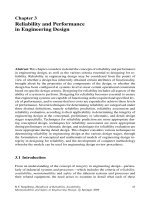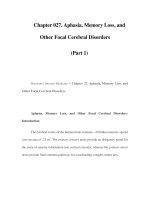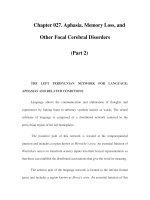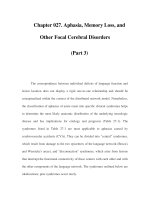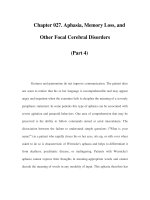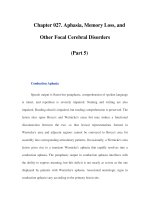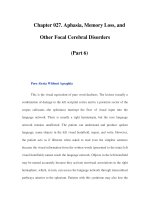Chapter 057. Photosensitivity and Other Reactions to Light (Part 7) docx
Bạn đang xem bản rút gọn của tài liệu. Xem và tải ngay bản đầy đủ của tài liệu tại đây (89.09 KB, 5 trang )
Chapter 057. Photosensitivity and
Other Reactions to Light
(Part 7)
Porphyria cutanea tarda is the most common type of human porphyria and
is associated with decreased activity of the enzyme uroporphyrinogen
decarboxylase associated with a number of gene mutations. There are two basic
types of PCT: (1) the sporadic or acquired type, generally seen in individuals
ingesting ethanol or receiving estrogens; and (2) the inherited type, in which there
is autosomal dominant transmission of deficient enzyme activity. Both forms are
associated with increased hepatic iron stores.
In both types of PCT, the predominant feature is a chronic photosensitivity
characterized by increased fragility of sun-exposed skin, particularly areas subject
to repeated trauma such as the dorsa of the hands, the forearms, the face, and the
ears. The predominant skin lesions are vesicles and bullae that rupture, producing
moist erosions, often with a hemorrhagic base, that heal slowly with crusting and
purplish discoloration of the affected skin. Hypertrichosis, mottled pigmentary
change, and scleroderma-like induration are associated features. Biochemical
confirmation of the diagnosis can be obtained by measurement of urinary
porphyrin excretion, plasma porphyrin assay, and by assay of erythrocyte and/or
hepatic uroporphyrinogen decarboxylase. Multiple mutations of the
uroporphyrinogen decarboxylase gene have been identified in human populations,
including exon skipping and base substitutions. Some patients with PCT have
associated mutations in the HFE gene linked to hemochromatosis. This could
contribute to the iron overload seen in PCT, although iron status as measured by
serum ferritin, iron levels, and transferrin saturation is no different from that in
PCT patients without HFE mutations. Prior hepatitis C virus infection appears to
be an independent risk factor for PCT.
Treatment of PCT consists of repeated phlebotomies to diminish the
excessive hepatic iron stores and/or intermittent low doses of the antimalarial
drugs chloroquine and hydroxychloroquine. Long-term remission of the disease
can be achieved if the patient eliminates exposure to porphyrinogenic agents.
Erythropoietic protoporphyria originates in the bone marrow and is due to
a decrease in the mitochondrial enzyme ferrochelatase secondary to numerous
gene mutations. The major clinical features include an acute photosensitivity
characterized by subjective burning and stinging of exposed skin that often
develops during or just after exposure. There may be associated skin swelling and,
after repeated episodes, a waxlike scarring.
The diagnosis is confirmed by demonstration of elevated levels of free
erythrocyte protoporphyrin. Detection of increased plasma protoporphyrin helps to
differentiate lead poisoning and iron-deficiency anemia, in both of which elevated
erythrocyte protoporphyrin levels occur in the absence of cutaneous
photosensitivity and of elevated plasma protoporphyrin levels.
Treatment consists of reducing sun exposure and the oral administration of
the carotenoid β-carotene, which is an effective scavenger of free radicals. This
drug increases tolerance to sun exposure in many affected individuals, although it
has no effect on deficient ferrochelatase.
An algorithm for managing patients with photosensitivity is illustrated in
Fig. 57-1.
Figure 57-1
An algorithm for the diagnosis of a patient with photosensitivity.
Photoprotection
Since photosensitivity of the skin results from exposure to sunlight, it
follows that absolute avoidance of the sun would eliminate these disorders.
Unfortunately, contemporary life-styles make this an impractical alternative for
most individuals, and this has led to a search for better approaches to
photoprotection.



